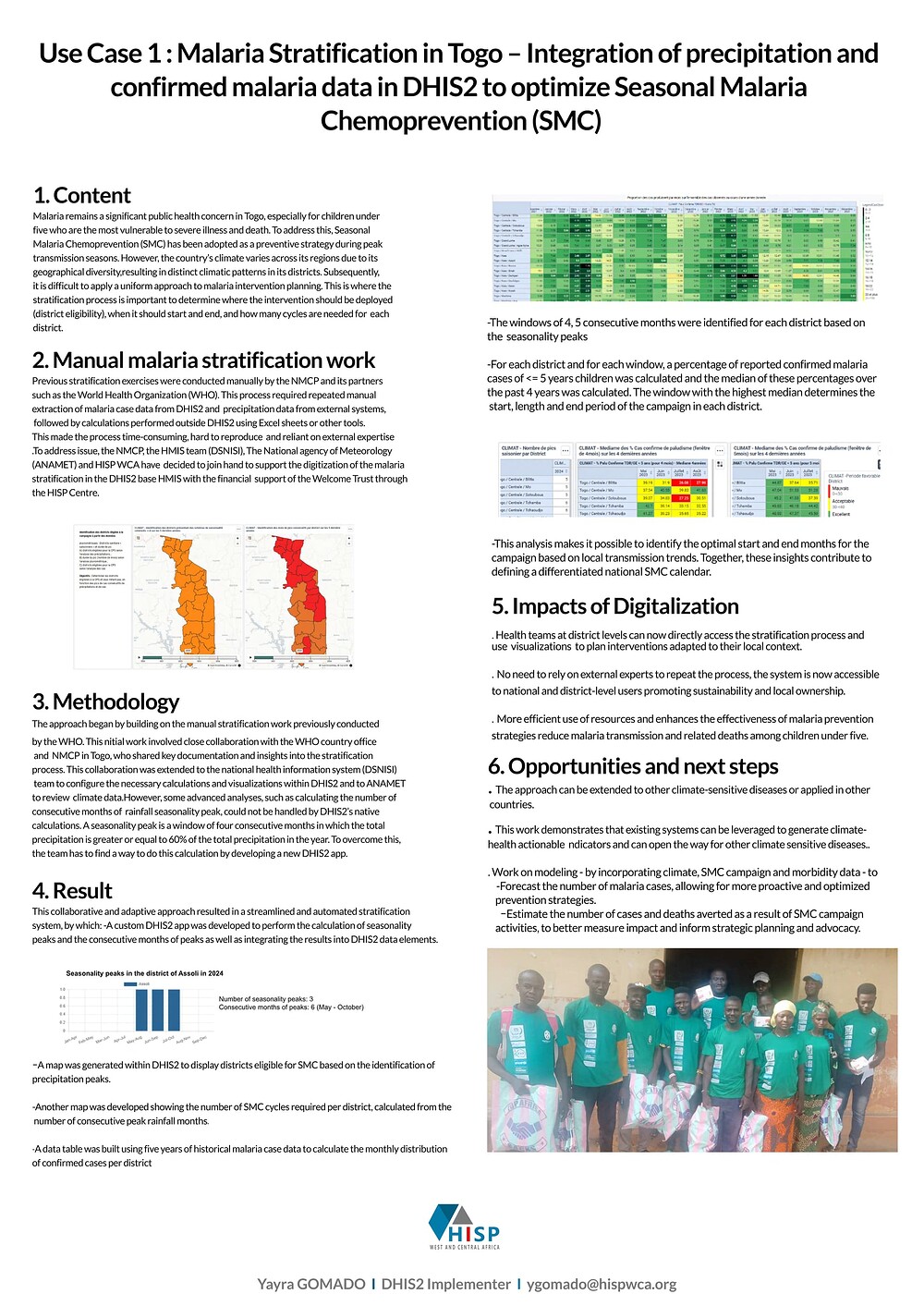AI Generated Summary
This document outlines a project on malaria stratification in Togo, focusing on integrating precipitation and confirmed malaria data into DHIS2 to optimize Seasonal Malaria Chemoprevention (SMC).
Key points:
- Problem: Manual malaria stratification was time-consuming, difficult to reproduce, and reliant on external expertise due to varying climate patterns across Togo’s districts.
- Solution: The National Malaria Control Program (NMCP), HMIS team (DSNISI), National Agency of Meteorology (ANAMET), and HISP WCA collaborated to digitize malaria stratification within the DHIS2-based HMIS.
- Methodology: The project built on previous manual stratification work by the WHO, extending collaboration to DSNISI for DHIS2 configuration and ANAMET for climate data review. A custom DHIS2 app was developed to handle advanced analyses like calculating consecutive months of rainfall seasonality peaks (four consecutive months with total precipitation >= 60% of the year’s total).
- Results: The initiative led to a streamlined, automated stratification system that identifies optimal SMC campaign start and end months, contributing to a differentiated national SMC calendar. Maps were generated within DHIS2 to display eligible districts and the required number of SMC cycles.
- Impacts: Digitalization allows district-level health teams direct access to the stratification process, reduces reliance on external experts, promotes sustainability and local ownership, and enhances resource efficiency and malaria prevention effectiveness.
- Opportunities/Next Steps: The approach can be extended to other climate-sensitive diseases or applied in other countries. Future work includes modeling to forecast malaria cases and estimate averted cases and deaths from SMC campaigns.
